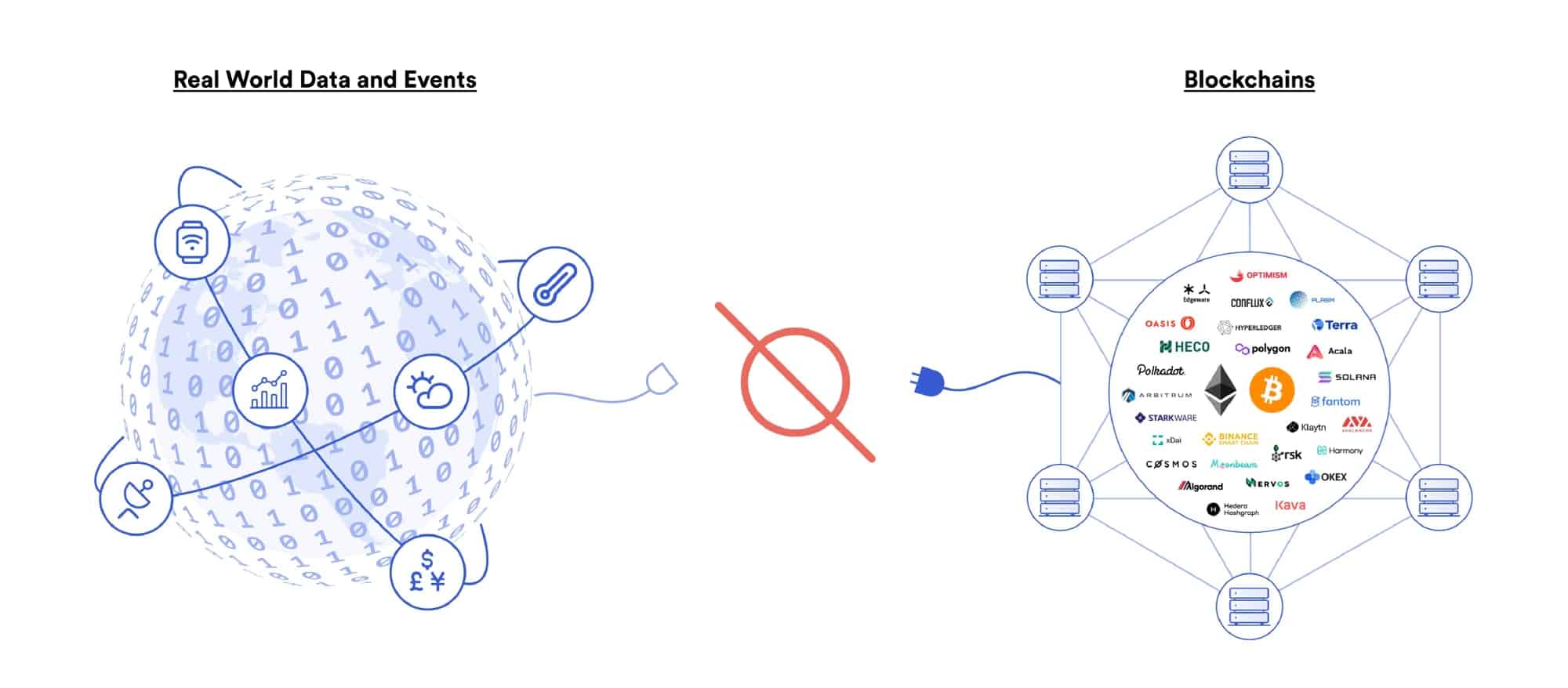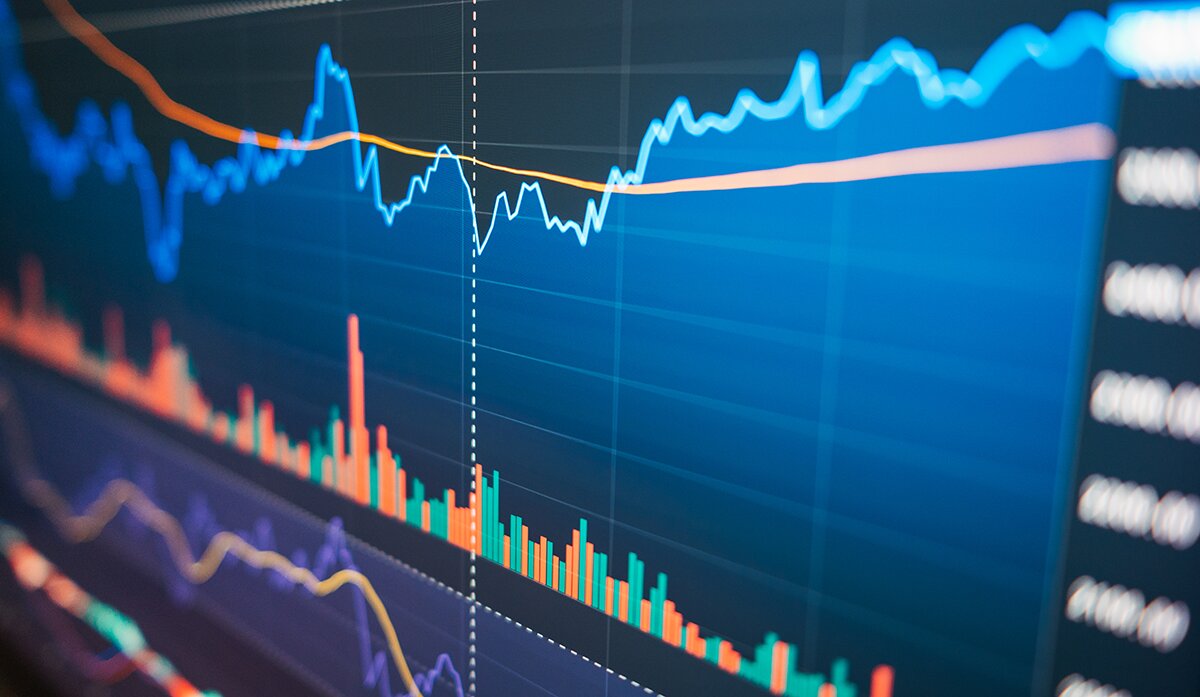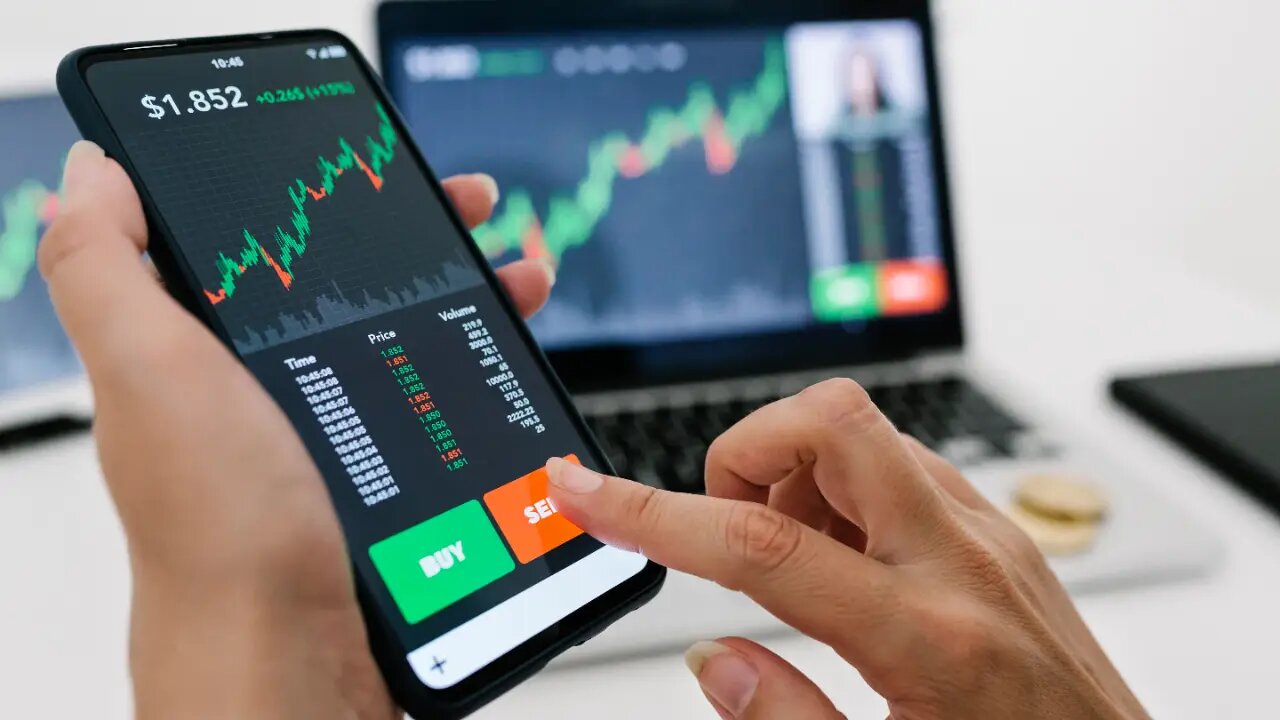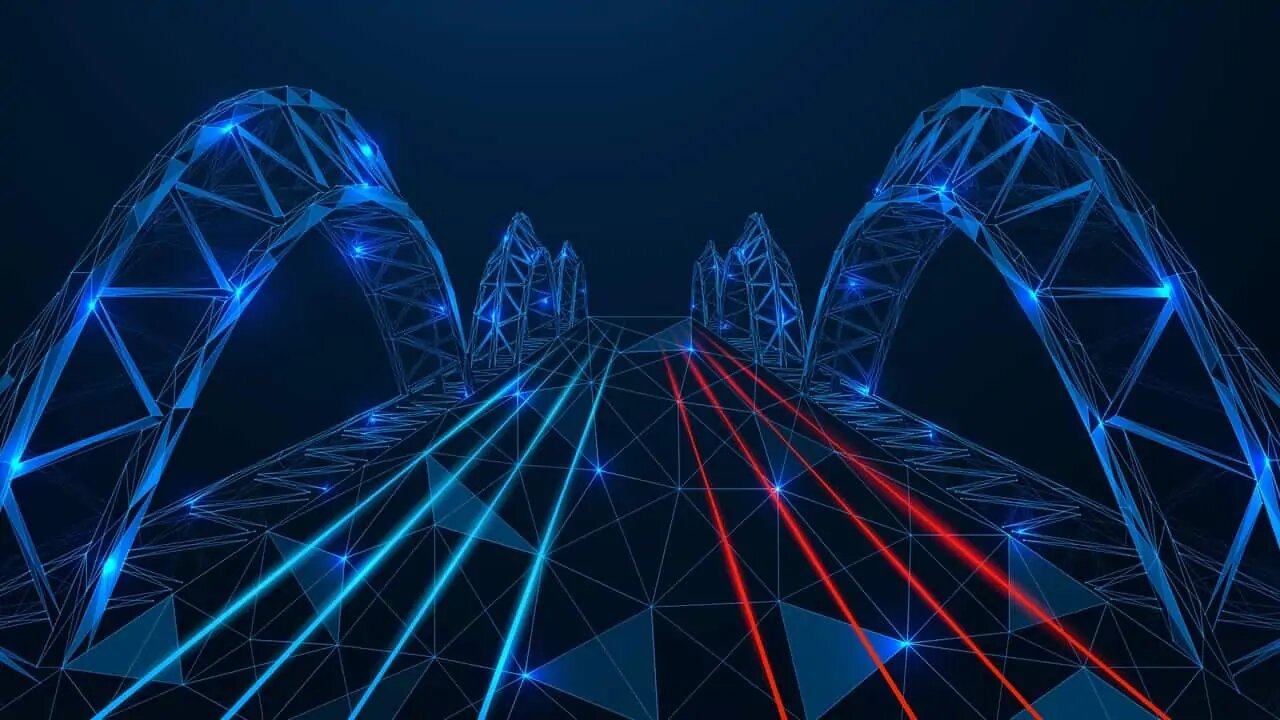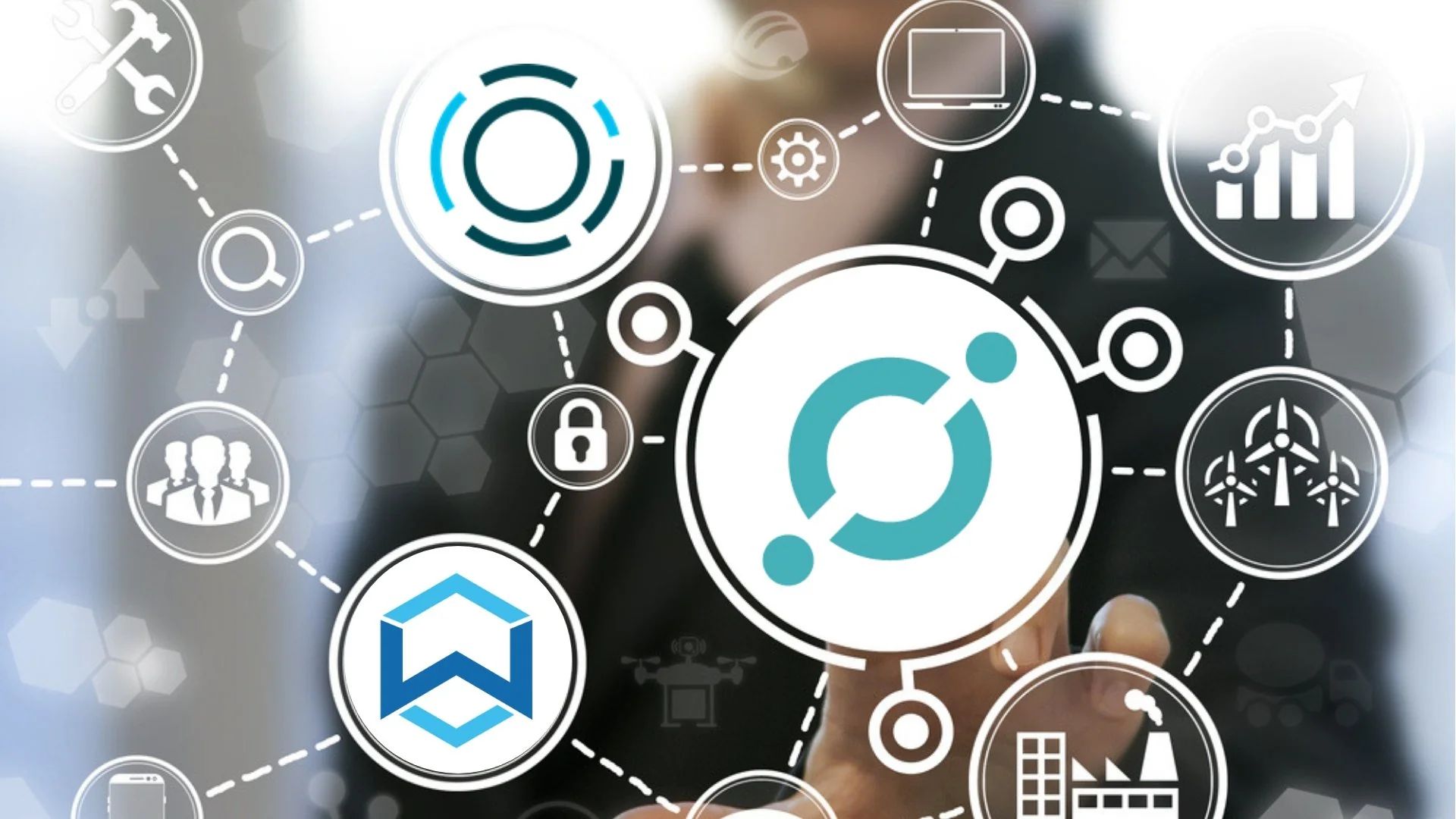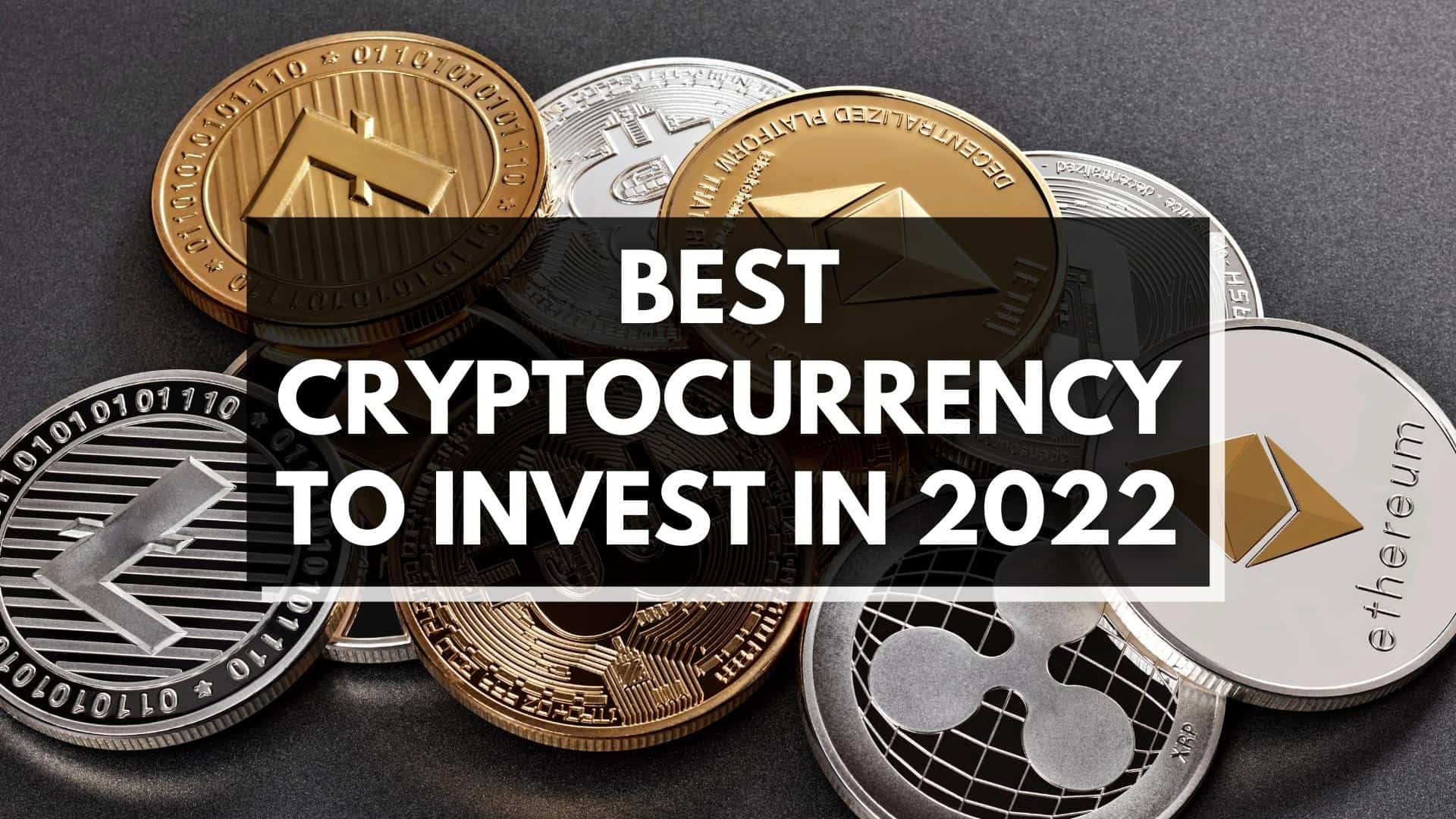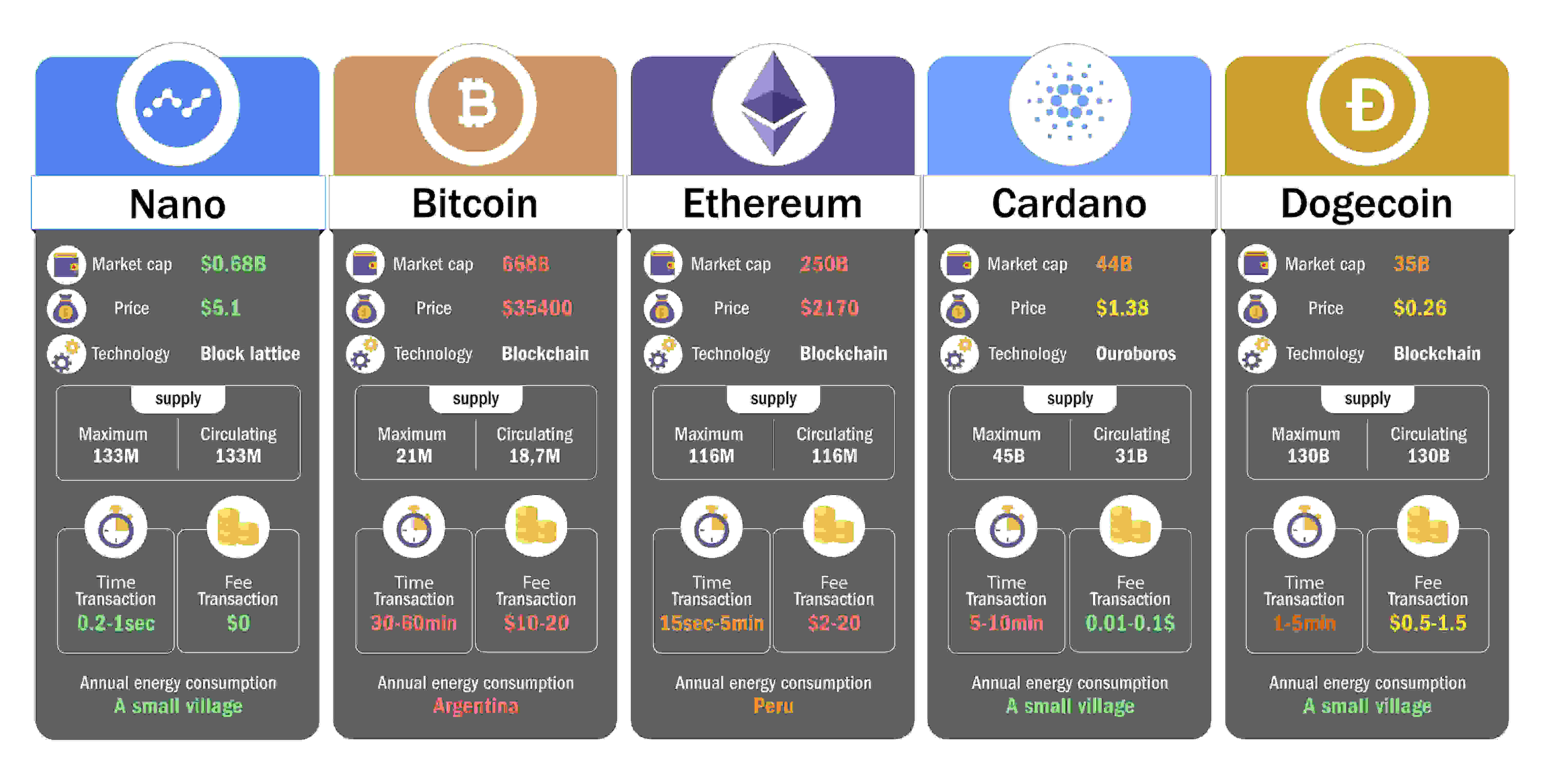Introduction
Welcome to the world of blockchain! In this cutting-edge technology, data and transactions are securely stored in a decentralized and distributed manner. Blockchain has gained immense popularity for its transparency, immutability, and ability to eliminate intermediaries in various industries such as finance, supply chain, healthcare, and more.
However, as blockchain technology evolves, there is a growing need to connect and interact with real-world data and systems outside of the blockchain network. This is where the concept of an Oracle comes into play.
An Oracle in blockchain acts as a bridge between the blockchain network and external sources of information. It enables smart contracts, which are self-executing contracts with predefined rules, to interact with real-world data and trigger actions based on that data. In simple terms, an Oracle brings real-world information into the blockchain ecosystem.
Without the presence of Oracles, blockchain networks would be limited to only having access to the data within the blockchain itself. This significantly restricts the usability and potential of blockchain technology. By integrating Oracles, blockchain applications can now interact with data from the internet, APIs, sensors, databases, and even traditional systems.
The role of Oracles is crucial in ensuring accuracy, reliability, and security of the data being brought into the blockchain. Oracles act as trusted mediators, providing authenticated and verified data from external sources. This is necessary to prevent fraud, tampering, and ensure the integrity of the blockchain network.
As blockchain continues to transform various industries, the importance of Oracles cannot be underestimated. The ability to access real-time data, make informed decisions, and automate processes based on that data opens up a world of possibilities and efficiency improvements.
In the following sections, we will explore how Oracles work in blockchain, the different types of Oracles, advantages and challenges of using Oracles, and real-world examples of their implementation.
Definition of Blockchain
Blockchain is a decentralized and distributed ledger technology that allows multiple parties to record, store, and verify transactions in a transparent and secure manner. Originally created to support cryptocurrencies such as Bitcoin, blockchain has expanded its applications to various industries beyond finance.
At its core, a blockchain is a continuously growing list of records, called blocks, that are linked together using cryptographic hashes. Each block contains a set of transactions that have been validated and confirmed by a network of computers, known as nodes, within the blockchain network.
One of the key features of blockchain is its decentralized nature. Unlike traditional centralized systems where there is a single authority or organization controlling the data, blockchain relies on a network of participants to validate transactions and maintain the integrity of the system. This distributed network ensures that no single entity has complete control over the data, making blockchain resistant to tampering and censorship.
Another important characteristic of blockchain is its transparency. All transactions recorded on the blockchain are permanently stored and can be accessed by anyone in the network. This transparency helps in fostering trust and accountability among the participants.
Blockchain operates on a consensus mechanism, where a majority of the network participants must agree on the validity of transactions before they are added to the blockchain. This consensus mechanism ensures that only legitimate transactions are recorded, preventing fraudulent activities.
The security of blockchain is achieved through cryptography. Each transaction and block in the blockchain is secured using advanced cryptographic algorithms, making it nearly impossible for unauthorized individuals to alter or manipulate the data.
Overall, blockchain technology offers a decentralized, transparent, secure, and tamper-proof platform for recording and verifying transactions. Its potential applications are limitless, ranging from financial services, supply chain management, healthcare, voting systems, and more. As blockchain continues to evolve and mature, it has the potential to revolutionize various industries and bring about unprecedented levels of efficiency, trust, and innovation.
Overview of Oracle in Blockchain
With the rise of blockchain technology, the need to connect and interact with real-world data and systems has become paramount. This is where an Oracle comes into play. An Oracle acts as a bridge between the blockchain network and external sources of information, allowing blockchain applications to access and utilize off-chain data.
When it comes to blockchain, the data stored on the blockchain itself is limited to the transactions and information recorded within the network. However, there is a wealth of data available outside of the blockchain that can greatly enhance the functionality and effectiveness of blockchain applications.
Oracles serve as trusted intermediaries that connect blockchain applications with external data sources, such as APIs, internet data, traditional databases, IoT sensors, and more. They retrieve and verify this off-chain data and provide it to the blockchain network in a format that can be utilized by smart contracts.
The primary role of an Oracle in blockchain is to provide real-time and accurate data to the decentralized network, enabling smart contracts to execute based on real-world conditions. For example, an Oracle can provide the current price of a particular cryptocurrency, weather conditions, stock market data, supply chain information, and much more.
Oracles play a crucial role in enabling trust and reliability within blockchain networks. They ensure the authenticity and integrity of the data being brought into the blockchain, thus eliminating the need for blind trust in external sources. Oracles achieve this by utilizing various mechanisms, such as data encryption, digital signatures, and cryptographic proofs, to ensure the validity of the data being provided.
Furthermore, Oracles can also enable the execution of complex transactions and processes that require interaction with external systems. For example, a smart contract on a blockchain can use an Oracle to trigger actions in a traditional banking system or send data to IoT devices.
It is important to note that there are different types of Oracles that cater to different use cases and requirements. These include software Oracles, hardware Oracles, network consensus Oracles, and trusted Oracles. Each type has its unique features and benefits, but they all share the common goal of bringing external data into the blockchain ecosystem.
In the following sections, we will delve deeper into how Oracles work in blockchain, discuss the various types of Oracles, explore their advantages and challenges, and provide examples of real-world applications utilizing Oracles.
Importance of Oracle in Blockchain
The importance of Oracles in blockchain cannot be overstated. They play a critical role in connecting blockchain networks with real-world data and systems, expanding the capabilities and applicability of blockchain technology. Here are some key reasons why Oracles are crucial in the blockchain ecosystem:
1. Access to External Data:
Blockchain networks have limited access to real-time data and information that exists outside of the blockchain itself. Oracles act as gateways, enabling blockchain applications to retrieve and utilize data from the internet, APIs, sensors, databases, and other external sources. This access to external data enables smart contracts to make informed decisions and trigger actions based on real-world conditions.
2. Automation and Efficiency:
By utilizing Oracles, blockchain networks can automate processes that require interaction with external systems. This allows for seamless integration between blockchain and traditional systems, minimizing manual intervention and improving overall efficiency. For example, smart contracts can automatically execute actions in response to specific data obtained from an Oracle, such as triggering a payment or updating a record.
3. Enhanced Trust and Reliability:
Oracles play a vital role in ensuring the authenticity and integrity of external data incorporated into the blockchain. By providing verified and validated data, Oracles instill trust in the blockchain network and eliminate the need for blind trust in external sources. The use of cryptographic mechanisms and proof algorithms further enhances the reliability of the data being brought into the blockchain.
4. Real-World Applications:
The integration of Oracles opens up a wide range of real-world applications for blockchain technology. Industries such as supply chain management, finance, healthcare, energy, and logistics can benefit from seamless interaction between blockchain networks and external data sources. For example, supply chain management systems can utilize Oracles to track and verify the authenticity of products throughout the supply chain, ensuring transparency and reducing counterfeiting.
5. Data-Driven Decision Making:
With the help of Oracles, blockchain networks can tap into a wealth of real-time data from various sources. This data can be used to make data-driven decisions and gain valuable insights. Organizations can leverage this data to improve operational efficiency, identify trends, and make informed business decisions.
In summary, Oracles are essential components in blockchain networks. They enable seamless integration with external data sources, automate processes, enhance trust and reliability, unlock new real-world applications, and facilitate data-driven decision making. As blockchain continues to revolutionize industries, the importance of Oracles will only grow, enabling the full potential of blockchain technology to be realized.
How Oracle Works in Blockchain
Understanding how Oracles work is crucial to grasp their significance in the blockchain ecosystem. Oracles act as intermediaries between external data and blockchain networks, providing a secure and reliable mechanism for accessing and utilizing off-chain information. Here is an overview of how Oracles work in blockchain:
1. Data Retrieval:
Oracles retrieve data from external sources, such as APIs, databases, sensors, or other systems, based on predefined queries or requests made by blockchain applications. The Oracle acts as a bridge, connecting the blockchain network to these external data sources.
2. Data Verification and Transformation:
After retrieving the data, the Oracle validates and verifies its authenticity and integrity. This is crucial to ensure that the data provided to the blockchain network is reliable. The Oracle may use various techniques, such as cryptographic algorithms and digital signatures, to verify the data.
Additionally, the Oracle may transform the data into a standardized format that can be understood by the blockchain network. This includes converting the data into a format compatible with smart contracts or other blockchain-specific requirements.
3. Consensus and Validation:
Once the Oracle has retrieved and validated the data, it broadcasts this information to the blockchain network. The network participants, or nodes, then verify and validate the data through a consensus mechanism. The consensus ensures that the majority of participants agree on the validity of the data before it is recorded on the blockchain.
The consensus process may involve additional checks and validations to ensure the accuracy and integrity of the data. This includes cross-referencing the data with other sources, performing additional computation or verification, and considering the reputation and trustworthiness of the Oracle itself.
4. Smart Contract Execution:
Once the data has been validated and approved by the network, it can be used within smart contracts to trigger actions and execute predefined logic. Smart contracts are self-executing contracts with the terms of the agreement directly written into code. Oracles provide the necessary data to enable these contracts to react and execute based on real-world conditions.
5. Continuous Data Updates:
Oracles can also provide continuous updates to the blockchain network as the external data changes. This ensures that the blockchain applications have access to the latest information and can adapt their actions accordingly.
It is essential to note that the role of Oracles is not limited to data retrieval and validation. Oracles can also perform various other functions, such as initiating payments, interacting with traditional systems, connecting IoT devices, and much more. The flexibility and functionality provided by Oracles greatly expand the possibilities and capabilities of blockchain technology.
In summary, Oracles act as intermediaries between blockchain networks and external data sources. They retrieve, verify, and transform data from external sources, undergo consensus and validation within the blockchain network, and enable smart contracts to execute based on real-world data. This seamless integration of off-chain data with blockchain technology is critical in unlocking the full potential of blockchain and its applications in various industries.
Types of Oracles in Blockchain
In the world of blockchain, there are various types of Oracles that cater to different use cases and requirements. These different types of Oracles provide unique functionalities and features to enhance the interaction between blockchain networks and external data sources. Here are some of the most common types of Oracles:
1. Software Oracles:
Software Oracles are the most common type of Oracles in blockchain. They are software programs or scripts that retrieve and process data from external sources, such as APIs, websites, or databases. Software Oracles act as intermediaries, translating the data into a format that can be understood and utilized by the blockchain network.
These Oracles can be programmed to periodically fetch and update specific data, ensuring that the blockchain network has access to real-time information. They are highly flexible and can be customized to retrieve data from a wide range of sources.
2. Hardware Oracles:
Hardware Oracles are physical devices that connect blockchain networks to external systems or sensors. They are commonly used in IoT (Internet of Things) applications, where data from sensors and devices needs to be integrated into the blockchain network.
Hardware Oracles act as data bridges, collecting and transmitting data from the physical world to the blockchain. They ensure the secure and reliable transfer of data by utilizing encryption and communication protocols.
3. Network Consensus Oracles:
Network Consensus Oracles rely on a consensus mechanism within a specific blockchain network to provide external data. These Oracles aggregate data from multiple sources and generate a consensus on the accuracy and validity of the data before providing it to the network.
This type of Oracle is particularly useful when multiple sources provide the same data, and an average or aggregated value is required. By leveraging the consensus of the network participants, these Oracles enhance the reliability of the data being brought into the blockchain.
4. Trusted Oracles:
Trusted Oracles are Oracles that are established and recognized as reliable and trustworthy within the blockchain ecosystem. They have undergone rigorous verification processes and have a proven track record of providing authentic and accurate data.
These Oracles often require a higher level of trust and validation, as they handle critical data or perform important functions within the blockchain network. They are typically operated by reputable organizations or institutions that have built a strong reputation in the blockchain community.
It’s important to note that these types of Oracles are not mutually exclusive, and in many cases, multiple types of Oracles can be used together to provide comprehensive data integration and functionality within blockchain networks.
The choice of Oracle type depends on the specific requirements of the blockchain application and the nature of the external data being integrated. Understanding the different types of Oracles is essential for designing and implementing effective blockchain solutions that leverage the power of real-world data.
Advantages of Using Oracle in Blockchain
The integration of Oracle technology in blockchain networks brings numerous advantages, enhancing the functionality, reliability, and usability of blockchain applications. Here are some key advantages of using Oracles in blockchain:
1. Access to Real-World Data:
By utilizing Oracles, blockchain applications gain access to a vast array of real-world data from external sources. This data can include market prices, weather conditions, supply chain information, IoT sensor readings, and more. The ability to incorporate off-chain data enables blockchain applications to make informed decisions based on real-time information.
2. Automation and Efficiency:
Oracles enable the automation of processes by facilitating the interaction between blockchain networks and external systems. This automation eliminates the need for manual intervention and reduces the potential for errors. It also improves operational efficiency by streamlining and speeding up transactions and data retrieval.
3. Trust and Reliability:
Oracles play a crucial role in ensuring the trustworthiness and reliability of external data being integrated into the blockchain. By providing authenticated and verified data from trusted sources, Oracles eliminate the need for blind trust in external information. This enhances the integrity and transparency of blockchain applications.
4. Expanded Use Cases:
With Oracles, blockchain technology can be applied to a wider range of use cases and industries. The ability to seamlessly integrate with external data sources opens up opportunities for applications in finance, supply chain management, healthcare, energy, and more. This expanded scope allows for innovative solutions that were previously limited by the lack of off-chain data integration.
5. Real-Time Updates:
Oracles provide real-time data updates to blockchain applications, ensuring that the information being utilized is up to date. This real-time access to information enables prompt decision-making, facilitates faster response times, and allows for dynamic adjustments based on changing conditions.
6. Enhanced Security:
By validating and verifying external data, Oracles contribute to the overall security of the blockchain network. They provide an additional layer of protection against malicious actors attempting to manipulate or introduce fraudulent data. The cryptographic mechanisms and proofs used by Oracles further enhance the security of the data being brought into the blockchain.
Overall, the integration of Oracles in blockchain brings numerous advantages, including access to real-world data, automation, trust and reliability, expanded use cases, real-time updates, and enhanced security. These advantages contribute to the increased adoption and effectiveness of blockchain technology in various industries. As Oracles continue to evolve, the advantages they bring to blockchain ecosystems will only grow, unlocking even more possibilities for innovation and transformation.
Challenges and Limitations of Using Oracle in Blockchain
While Oracles bring numerous advantages to blockchain networks, their integration also comes with certain challenges and limitations. It is important to address these challenges to ensure the effective and secure implementation of Oracles in blockchain applications. Here are some of the main challenges and limitations of using Oracles in blockchain:
1. Data Trustworthiness:
One of the key challenges is ensuring the trustworthiness of the external data being provided by Oracles. While Oracles play a vital role in validating and verifying data, there is still a degree of dependency on the integrity and accuracy of the external data sources. If these sources are compromised or provide inaccurate data, it can lead to misleading results and potential vulnerabilities in the blockchain network.
2. Centralization of Oracles:
In some cases, Oracles may introduce a centralization point in the otherwise decentralized nature of blockchain networks. If a single Oracle has a significant influence or control over the data being provided, it can create a single point of failure or manipulation. This can undermine the security and resilience of the blockchain network.
3. Privacy and Confidentiality:
When integrating external data through Oracles, privacy and confidentiality can become a concern. Depending on the nature of the data being accessed, there may be sensitive or confidential information that needs to be protected. Care must be taken to ensure that privacy measures are in place and the data is securely transmitted and stored within the blockchain network.
4. Delay in Data Retrieval:
Obtaining data from external sources through Oracles may introduce delays due to network latency or the need for extensive data verification. This latency may impact the real-time nature of certain applications and require careful consideration when designing time-sensitive processes or transactions.
5. Potential for Malicious Oracles:
There is a risk of malicious actors attempting to compromise Oracles and introduce false or manipulated data into the blockchain network. This can lead to fraudulent actions and undermine the trust and reliability of the system. Implementing robust security measures, such as Oracle reputation systems and audit mechanisms, can help mitigate this risk.
6. Complexity of Integration:
Integrating Oracles into blockchain networks can be a complex process, especially when dealing with multiple data sources or different types of Oracles. Ensuring seamless compatibility and secure data transmission and validation require careful planning and implementation.
Addressing these challenges and limitations is crucial to ensure the effective and secure utilization of Oracles in blockchain applications. By investing in robust security measures, implementing decentralized Oracle networks, and improving data verification processes, the potential risks and limitations can be minimized, enabling blockchain applications to leverage the power of external data in a trusted and reliable manner.
Oracle Examples in Blockchain Applications
As the integration of Oracles in blockchain technology becomes more prevalent, numerous real-world examples demonstrate how they enhance the functionality and value of blockchain applications across various industries. Here are a few notable examples of Oracle usage in blockchain applications:
1. Supply Chain Management:
In supply chain management, Oracles are used to track and verify the authenticity and provenance of products. Oracles can retrieve data from external sources, such as IoT devices or trusted databases, to monitor parameters like temperature, humidity, and location during the transportation of goods. This enables transparent and tamper-proof supply chain traceability throughout the entire process, ensuring compliance with regulations and improving accountability.
2. Decentralized Finance (DeFi):
In the realm of decentralized finance (DeFi), Oracles play a critical role in providing reliable data for various financial applications. Oracles supply real-time price feeds for cryptocurrencies, enabling accurate asset valuations, decentralized exchange rates, and secure lending/borrowing protocols. Additionally, Oracles verify off-chain events, such as payment confirmations or insurance claims, to trigger smart contract executions.
3. Insurance:
Oracles are utilized in the insurance industry to automate claims processing and streamline policy underwriting. By integrating external data, such as weather conditions or IoT device data, Oracles allow for accurate risk assessment and policy customization. For instance, Oracles can enable weather data integration for parametric insurance, automatically triggering payouts when the defined weather conditions are met.
4. Healthcare:
In healthcare, Oracles enhance interoperability and security by connecting electronic health records (EHRs) across different systems and providers. They enable the secure and private sharing of patient data, ensuring that healthcare professionals have access to accurate and up-to-date medical information. Oracles can also facilitate clinical trials by securely collecting and aggregating patient health data from multiple sources.
5. Energy Trading and Grid Management:
In the energy sector, Oracles are employed to facilitate peer-to-peer energy trading and monitor grid conditions. By retrieving data from IoT devices and smart meters, Oracles enable efficient and transparent energy transactions between producers and consumers. In addition, Oracles can provide real-time data on renewable energy production and grid stability, facilitating optimal grid management and balancing.
These examples represent just a fraction of the diverse applications for Oracles in blockchain technology. The ability of Oracles to connect with external data sources and trigger smart contracts based on real-world events unlocks an array of possibilities for improving transparency, efficiency, and trust in various industries.
Conclusion
In conclusion,
The integration of Oracles in blockchain technology has revolutionized the capabilities and potential of blockchain applications across various industries. Oracles act as crucial intermediaries, bridging the gap between blockchain networks and external data sources, thereby enabling the integration of real-world information into the blockchain ecosystem.
Through Oracles, blockchain applications gain access to real-time and verified data from sources such as APIs, databases, sensors, and traditional systems. This data integration enhances decision-making, automates processes, and expands the use cases of blockchain technology.
Oracles bring numerous advantages to blockchain networks, including access to real-world data, automation and efficiency, enhanced trust and reliability, expanded applications, real-time updates, and improved security. These advantages empower blockchain technology to achieve new levels of transparency, efficiency, and innovation.
However, while the benefits of Oracles are undeniable, there are also challenges and limitations to overcome. Ensuring the trustworthiness of external data, addressing potential centralization concerns, and maintaining privacy and security remain important considerations when using Oracles in blockchain applications.
Despite the challenges, Oracles continue to evolve and improve, with innovative solutions addressing the limitations and enhancing the functionality of these intermediaries. The continued development and adoption of decentralized Oracles, improved data verification mechanisms, and advancements in privacy and security measures will further strengthen the integration of Oracles in blockchain networks.
Overall, the integration of Oracles in blockchain technology represents a significant milestone in the evolution of decentralized and transparent systems. By harnessing the power of external data, Oracles contribute to the growth, scalability, and widespread adoption of blockchain technology, paving the way for a future where real-world information seamlessly interacts with the blockchain.







